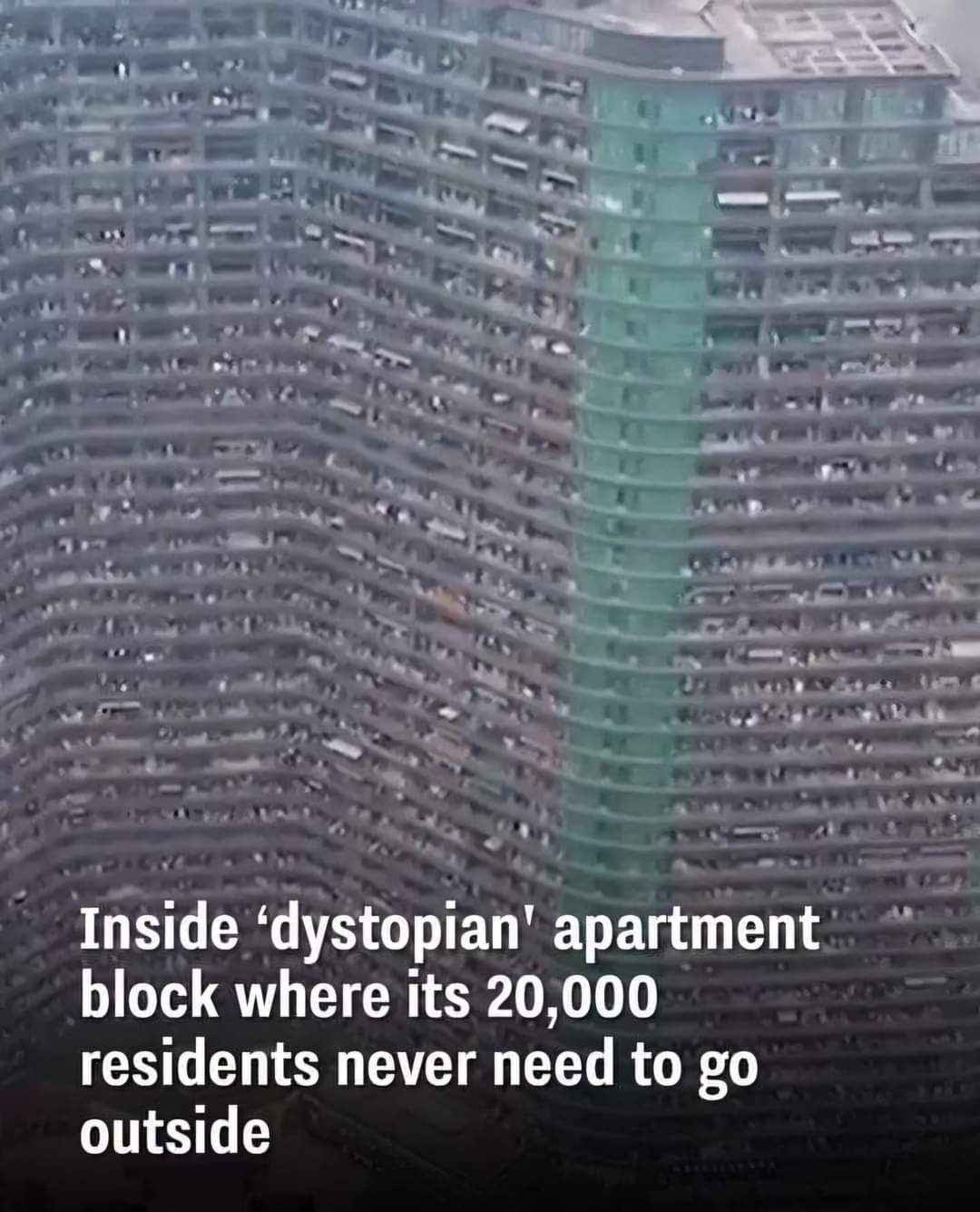In Hangzhou, China, the Regent International Apartment complex has redefined urban living, hosting over 20,000 residents within a single building structure. Known for its extreme density and range of facilities, this apartment block spans multiple buildings with amenities that make it nearly self-contained, providing shops, gyms, schools, and offices—all accessible without needing to leave the building. This concept of ultra-dense living has drawn both fascination and criticism, and many wonder whether this model offers a sustainable solution for the future of housing or if it leads to inevitable challenges.
The Rise of High-Density Living Spaces
Urban centers worldwide are facing unprecedented housing demands as populations grow, and the Regent International apartments are a response to this issue. The complex maximizes space vertically, fitting thousands of people within a fraction of the land traditionally required for such a population. Each floor can feel like a small community, where individuals live, work, and socialize in close proximity. For many, this represents the future of urban housing.
With convenience as a priority, the Regent International Apartment provides nearly every amenity imaginable, from medical facilities to entertainment options, reducing the need to leave the area. It becomes a “city within a city,” a term frequently used to describe megastructures designed to contain all essential services in one place.
Advantages of Living in a Megastructure
The Regent International Apartment block showcases the benefits of high-density living. With everything accessible in one area, residents experience significant reductions in commute time. Stores and services like fitness centers, schools, and clinics are a short walk or elevator ride away, allowing residents to focus more on work, family, or leisure activities. Additionally, the complex offers a level of safety and security that can be attractive, with multiple layers of entry and continuous surveillance enhancing residents’ peace of mind.
The energy efficiency of these large buildings is another advantage. With dense populations sharing facilities, energy consumption per capita is often lower than in dispersed suburban communities. This model is seen by some urban planners as an efficient way to reduce urban sprawl and environmental impact.
“A Dystopian Model of Living?”
Despite the conveniences, the concept of ultra-dense living is not without its drawbacks. Some critics describe the atmosphere in buildings like Regent International as “dystopian,” highlighting a lack of outdoor spaces, limited privacy, and restricted personal space. While residents may find daily needs met within the walls, the constant proximity to thousands of others can lead to sensory overload and a loss of personal space. This is especially true in countries where people traditionally value personal gardens, parks, or even quiet streets, which aren’t available in such buildings.
Research on high-density living suggests that mental health may be impacted over time, especially for residents lacking access to green spaces or who feel confined by the scale of such structures. Unlike traditional apartment complexes, where buildings are interspersed with parks and recreational areas, high-density buildings such as Regent International may feel stifling for some individuals. This aspect can turn the concept of convenient city living into an experience of confinement, leading residents to feel detached from nature and disconnected from the outside world.
Life Inside the Walls: A Resident’s Perspective
Many residents, however, enjoy the structure’s unique layout and the sense of community that emerges in shared spaces. One resident stated, “It’s like living in a big, vertical neighborhood. You know your neighbors, you recognize faces, and there’s always something happening.” This sense of familiarity and shared experience builds a distinct communal atmosphere, and for many, the benefits outweigh the drawbacks.
Nonetheless, residents also point out some challenges. Maintenance can become a significant issue when a single complex has to cater to tens of thousands of people. Repairs, elevator downtime, or even occasional power outages impact thousands simultaneously, causing frustration and discomfort. Additionally, high-density complexes often struggle with noise management, where the sheer number of people leads to more background noise, especially during peak hours.
The Future of Urban Housing?
The concept of high-density megastructures like Regent International is gaining traction as cities grapple with population growth and housing shortages. While some see it as a glimpse into the future of urban design, others fear it could lead to greater social isolation or psychological effects among residents. Urban planners must consider these concerns, especially as they build the next generation of high-density housing.
With thoughtful architectural design, it is possible to create more human-centered environments that still maximize space but incorporate elements of nature, social interaction zones, and quality-of-life improvements. Green spaces, for instance, can be integrated into these buildings through rooftop gardens, terraces, and indoor parks, allowing residents to connect with nature without leaving the premises.
In places where housing demands continue to rise, these types of high-density buildings may offer a workable solution. “High-density housing is not the issue; it’s how we design and manage these spaces that will make the difference,” notes one urban planner. By addressing these potential pitfalls, cities can embrace megastructures that support both density and quality of life.
Conclusion: A Bold, Controversial Vision
The Regent International Apartment complex illustrates the extremes of modern urban living. While the conveniences are hard to ignore, the model raises questions about privacy, mental health, and lifestyle balance. For some, this high-density model is appealing, offering a lifestyle with minimal commute and maximum accessibility. For others, the lack of outdoor spaces and the overwhelming density make it challenging to feel at ease.
As cities worldwide confront similar housing challenges, projects like Regent International may pave the way for future housing developments. The balance will lie in creating spaces that support dense populations while addressing the psychological and environmental needs of residents. Whether hailed as a futuristic solution or criticized as a “dystopian” reality, one thing is clear: high-density housing is here to stay, and the challenge now is to make it truly livable.

